Hoeing, Watering and Waiting...
Weed Control
Between sowing and harvesting, the work consists primarily of hoeing and tined weeding. The information detailed in the texts and videos on sojafoerderring.de (in German) can be directly applied to edamame. However, due to the lower density of the crop and sometimes slower development of seedlings, edamame requires more care than dry soya.
When tine weeding blindly, which is generally very successful, it should be noted that the large edamame seedlings break off more easily than normal soya beans. The key is – we can't say it enough – an optimal seedbed with the seeds placed at even depths. With a bit of luck, about four days after sowing, a fine tined weed rake can be used to lay the foundation for a clean field with minimal effort.
Irrigation
Apart from the water requirements for the germination of their large seeds, edamame need little moisture when young. There should be no drought during flowering, however, otherwise too many fruit sets will be lost. Yet a rough and/or cold irrigation during flowering can be just as harmful (be careful with irrigation wheels – be sure to use small nozzles). From pod formation to harvest, any lack of water will affect the yield, and the plants’ thirst increases steadily as time goes on. A lack of water to fill the kernels also leads to faster ripening and thus to an even shorter harvest window as well as smaller pods.
Pests
Near cities, there are often failures due to pigeons that eat the seedlings. Crows also occasionally take their toll. Here, in addition to the usual protection measures against birds, good seeds and careful sowing in warm soil are especially helpful, so that the plants can grow quickly. The same applies to bean flies, which, when the crop is growing slowly, particularly in clay soils, can eat away at the crop, creating gaps. In small-scale cultivation, fleece covers are the best solution.
Rabbits, deer and stags sometimes also graze on older plants. However, these plants are usually able to cope with severe feeding damage. Sometimes you get the impression that the bites even stimulate the pod attachments.
Snails can also sometimes cause considerable damage in small-scale cultivation. However, the large edamame seedlings can tolerate more than many other finer seeds.
Painted Lady butterflies fly over from the Mediterranean every few years, but over time we have lost all fear of them. Occasionally there are severe damages to the crop, but it only happens every six to seven years and only affects, at most, two percent of Germany's soya bean land.
Diseases
Edamame is susceptible to a surprisingly low number of diseases. Sclerotinia causes considerable damage, especially when it goes directly to the pods, however, we are only aware of a few serious incidents. Edamame is definitely less susceptible to sclerotinia than garden beans; the fungus usually plays no role with edamame in dry locations. In the event of infestation, wide rows help ensure good aeration and giving the plants large amounts of water in lower frequencies allows the crops to dry off. Once the fungus arrives, it can spread quickly. As with garden beans, if the fungus arrives, you should not wait any longer than necessary before harvesting.
The second fungus common to soya is Diaporthe/Phomopsis. However, it spreads only in the maturing crop and therefore plays practically no role in the cultivation of edamame.
Edamame soya bean varieties appear to be considerably more susceptible to soya bean mosaic virus than dry varieties. This is presumably because the latter were often selected in America, where the virus is widely spread, while the disease is of no importance in Japan, home to most strains of edamame. The virus survives the winter by infesting seeds and is spread by aphids from plant to plant and from field to field. The leaves of infected plants are very curled and the pods are smaller, which can reduce the yield, yet according to Gartensoja’s observations thus far, the infestation is usually not very relevant in regards to the yield. Healthy beneficial flora help exterminate the aphids, which often come from far away. The virus then does not spread further amongst the crop.
Click here to jump to the page about “Harvest”.

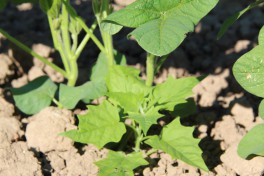
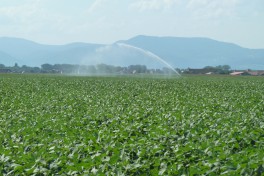
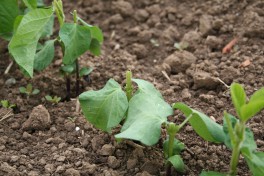
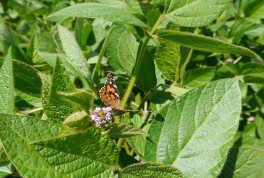
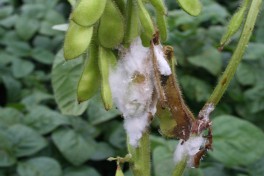
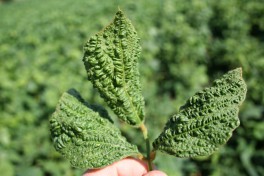
Gartensoja | Fabian von Beesten | Körtlinghausen 8 | D-59602 Rüthen
